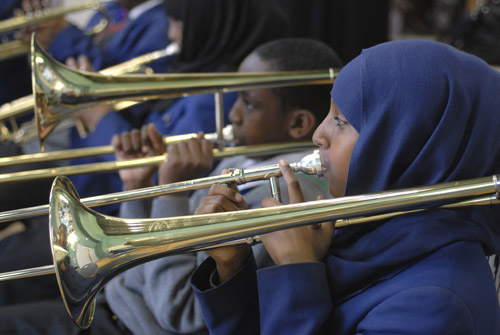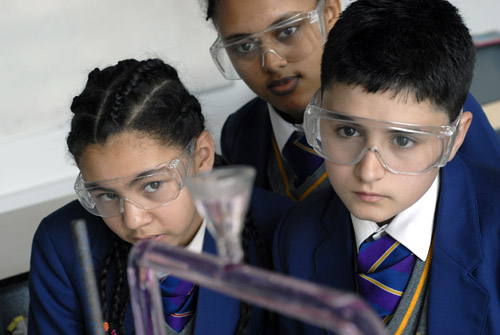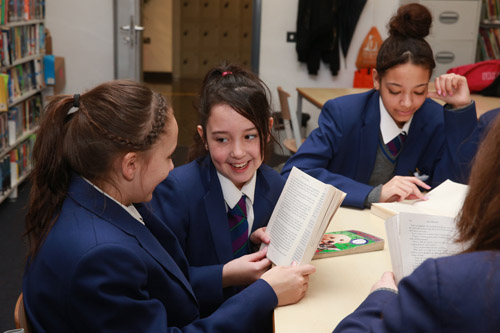We have high expectations for all our pupils and ensure that every learner is challenged and supported to reach their full potential.
Art, Technology and Photography curriculum
Here at Platanos College, we believe that Art, Technology and Photography embody some of the highest forms of creativity. Our curriculum strives to engage, inspire and challenge pupils, equipping them with the knowledge and skills to experiment, invent and create their own works of art, craft and design. As our pupils progress, they will be able to think critically and develop a more rigorous understanding of Art and Design. They will also explore how art and design both reflect and shape our history, and contribute to the culture, creativity and wealth of the world.
Why is it important for pupils to study Art and Technology?
- Pupils can express their feelings and personality through Art, Design and Photography.
- Art, Design and Photography allows pupils to understand the visual world around them.
- At Key Stage 3 pupils can experiment with a wide range of areas of Art, Design and Photography to learn their own unique style.
- At Key Stage 4 pupils can expand on their knowledge of Art, Design and Photography and develop their skills in specialist areas.
- Pupils learn and develop skills in Art, Design and Photography within a range of forms, techniques and processes.
- Experiment with materials, techniques and processors using a variety of media.
- Broaden their understanding in the different areas of Art, Design and Photography.
- Research relevant artists, gaining applicable research skills.
- Gain knowledge of periods in history, art movements, artists and designers.
The Art and Design department believe that the Visual Arts are a key component in today’s society. Visual Communication is a language that all people speak; it cuts across racial, cultural, social, educational, and economic barriers and enhances cultural appreciation and awareness. The Visual Arts exercise and develop higher order thinking skills including analysis, synthesis, evaluation, and problem solving.
Art and Design now has very real and direct links to future employment. The creative industries have been growing three times as fast as the national economy and “The UK remains a leading marketplace for art, according to figures released by Thomson Reuters” (Telegraph).
The National Curriculum
Pupils should be taught to develop their creativity and ideas, and increase proficiency in their execution. They should develop a critical understanding of artists, architects and designers, expressing reasoned judgements that can inform their own work.
Pupils should be taught:
- To use a range of techniques to record their observations in sketchbooks, journals and other media as a basis for exploring their ideas.
- To use a range of techniques and media, including painting.
- To increase their proficiency in the handling of different materials.
- To analyse and evaluate their own work, and that of others, in order to strengthen the visual impact or applications of their work.
- About the history of art, craft, design and architecture, including periods, styles and major movements from ancient times up to the present day.
How to help at home
- Talk to them about art work. Having discussions about art will develop their ability to think critically and develop a more rigorous understanding and appreciation of art.
- Take your child to art galleries and exhibitions in London. We are extremely fortunate living in London as there are plenty of free, child-friendly galleries, exhibitions and pop-up installations. Keep an eye out for possible trips in the ‘Time Out’ publication.
- Get creative at home. Spend time with your children sketching, painting, sculpture making, collage designing etc. Giving them more opportunities to develop their art skills will help them master the techniques in the key areas of Art, Design and Photography.
- Have a sketch book which your child can take with them on holidays, days out etc. They can record their observations in their sketch books. This will help them develop their ability to make observations from real-life studies.
- Make use of your local library. Looking at existing work can help inspire and influence their art work and love for the subject.
Key Stage 3 Overview
(Subject to change)
The Key Stage 3 curriculum has been produced so that students get a wide range of knowledge, understanding and skills within different areas of Art, Design and Photography. The different projects have been carefully planned so that students build up on their prior knowledge, understanding and skills and make progress throughout this key stage. The projects cover a wide range of different types of art from all areas of the world and times in history. All key stage 3 students can experiment with a wide range of areas in Art, Design and Photography to learn their own unique style. Students have opportunities to experiment with different materials, media, techniques and processes throughout every project. Students are encouraged to broaden their understanding and knowledge of different periods in history, art movements and the course covers many different artists/designers that are relevant to their studies.
| Year 7 | Term 1 | |
| Art | Graphics | |
| Topic | Freeze Frame- Still Life | Plastic Ocean |
| Skills |
|
|
| Career Link | Creative Careers | Graphic Designers |
| Enrichment opportunities |
|
|
| Year 7 | Term 2 | |
| Art | Graphics | |
| Topic | Masks | Oyster Card Holder Design |
| Skills |
|
|
| Career Link | Ceramics | Brand Packaging designer |
| Enrichment opportunities |
|
|
| Year 7 | Term3 | |
| Art | Graphics | |
| Topic | Mythical Creatures | Typography |
| Skills |
|
|
| Career Link | Illustrator | Typographer |
| Enrichment opportunities |
|
|
| Year 8 | Term 1 | |
| Art | Graphics | |
| Topic | Natural Forms | 3D Drawing Skills & Typography |
| Skills |
|
|
| Career Link | Photographer | Designer |
| Enrichment opportunities |
|
|
| Year 8 | Term 2 | |
| Art | Graphics | |
| Topic | Portraiture | Identity |
| Skills |
|
|
| Career Link | Portrait Artists | Graphic designers |
| Enrichment opportunities |
|
|
| Year 8 | Term3 | |
| Art | Graphics | |
| Topic | Urban Landscape | Book Cover Design |
| Skills |
|
|
| Career Link | Architect | Illustrator |
| Enrichment opportunities |
|
|
| Year 9 | Cycle 1 | |
| Art | Graphics | |
| Topic | Objectify | Packaging Design – Food illustration |
| Skills |
|
|
| Career Link | Creative Careers | Illustrator, Printmaker & Graphic Designer |
| Enrichment opportunities |
|
|
Key Stage 4 Overview
The GCSE for Art, Graphics and Photography is split into two Components:
Component 1: Portfolio (60% of the final mark)
There is no restriction on the scale of work, media or materials used. The aim of this component will be on the development of understanding and skills using an appropriate range of materials, processes and techniques including many of the following: drawing, painting, photography, printmaking, 3D design, digital media and digital manipulation.
Each pupil must select and present a portfolio representative of their course of study.
The portfolio component includes two separate units of work.
Component 2: Externally set assignment. Pupils select and respond to one starting point from their chosen title (40% of the final mark).
The externally set assignment provides pupils with the opportunity to demonstrate, through an extended creative response, their ability to draw together different areas of knowledge, skills and understanding in response to their selected starting point through to their realisation of intentions in the final practical exam.
The externally set assignment is issued from early January followed by an extended preparation period prior to the final exam after Easter.
| Year 10 | Term 1 and 2 | ||
| Art | Graphics | Photography | |
| Topic | Micro Macro- Natural forms | Musical motifs | Micro Macro- Natural forms |
| Skills |
|
|
|
| Enrichment opportunities |
|
|
|
| Year 10 | Term 3 | ||
| Art | Graphics | Photography | |
| Topic | Order Disorder | Order Disorder | Order Disorder |
| Skills |
|
|
|
| Enrichment opportunities |
|
|
|
| Year 11 | Term 1 | |
| Art | Graphics | |
| Topic | Order Disorder | Order Disorder |
| Skills |
|
|
| Year 11 | Term 2 and 3 | |
| Art | Graphics | |
| Topic | Exam – unseen theme | Exam – unseen theme |
| Skills |
|
|




